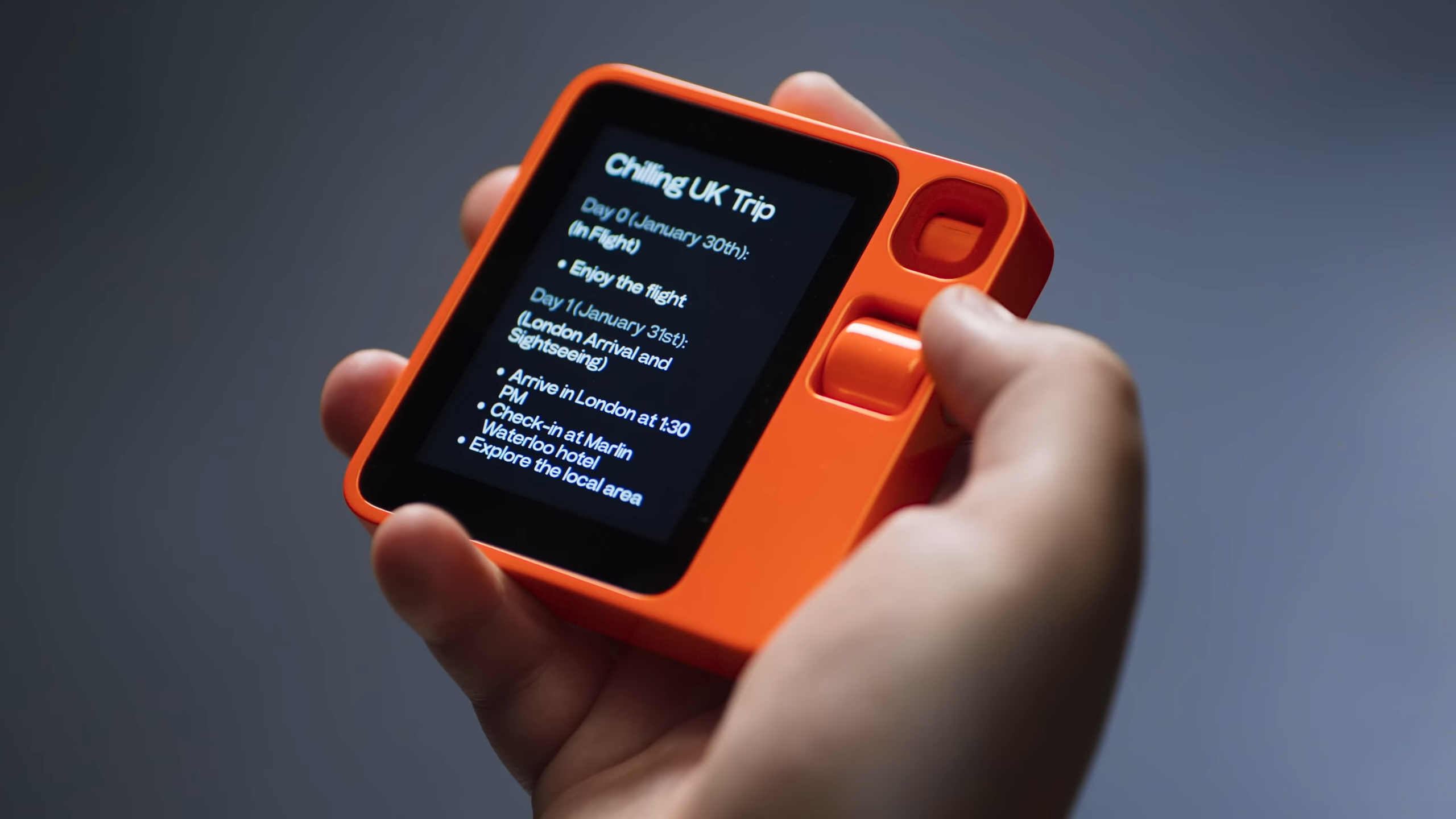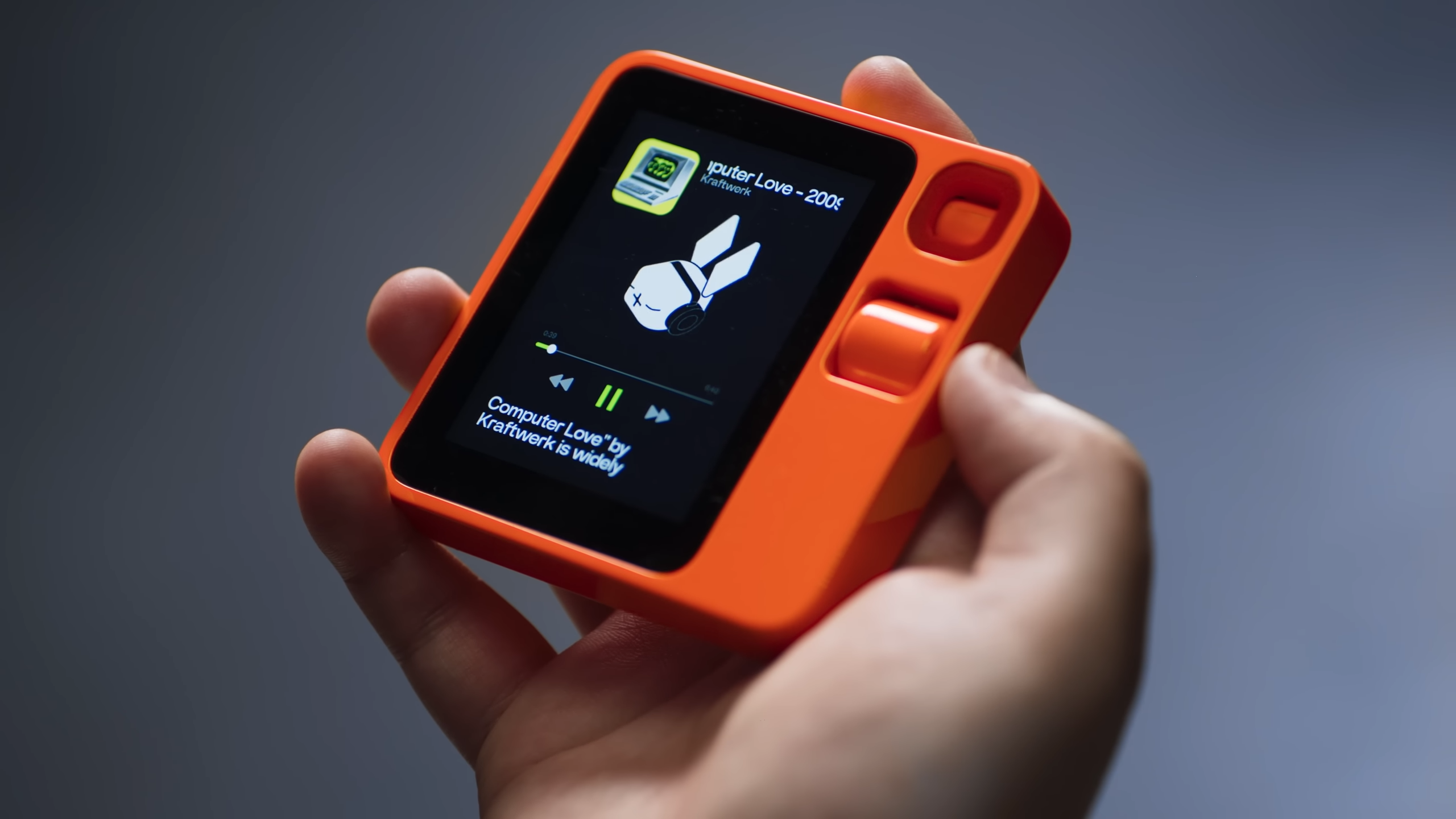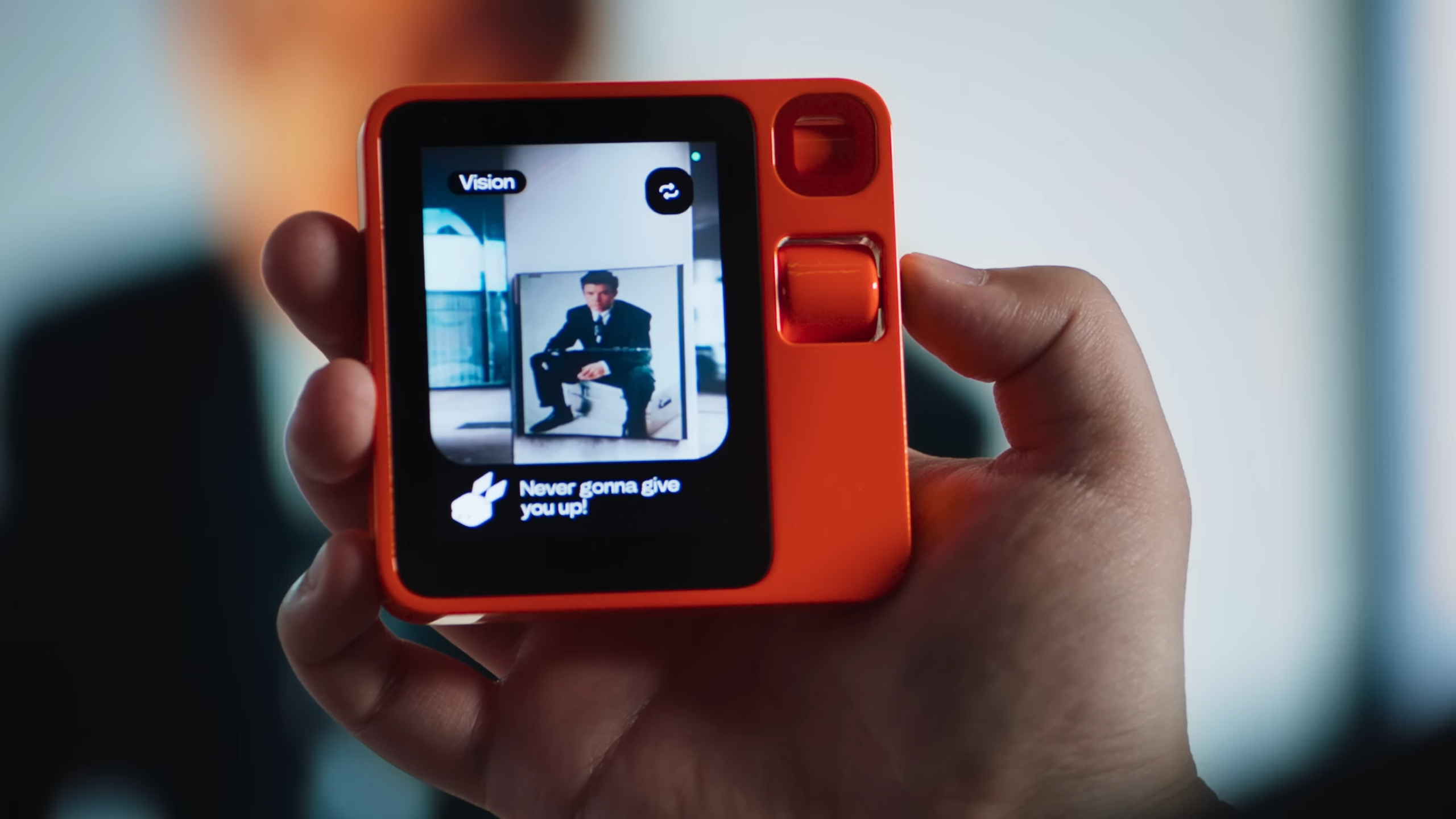CES is home to some of the whackiest tech out there, but the one product that caught our attention above all others this year is the Rabbit R1. It is a smartphone, technically, but unlike any other smartphone you might’ve ever used. It’s at the very forefront of innovation, embracing AI at a level no smartphone maker has thought of today. The Rabbit R1 doesn’t have apps like the phone in your pocket right now, but relies on a generative AI-based voice bot that gets things done for you — and people are quite keen to know more about this novel approach to smartphones. But how exactly does this bright orange puck-shaped phone work, and is its underlying concept even practical?
What is the Rabbit R1?
You need to rely on dozens of apps to get things done on your current smartphone, and that’s been the norm since the advent of smartphones and the app store. That means you have an app for each of your needs, like shopping, ordering food, and note-taking, among others. Rabbit wants to reimagine that with the help of AI, where your phone does all those things on your behalf with just a natural language command. And there are two parts to how Rabbit has tried to put the whole experience together.
The Large Action Model — or LAM for short
While you might’ve heard of large language models (LLMs) that help generative AIs learn and give you information (as opposed to doing a task for you), Rabbit’s large action model (LAM) aims to make AI more actionable. From the company’s demo video, it appears that the company trained its LAM to understand how a person uses apps for different things — say, to add a song to a Spotify playlist. Its biggest strength, the company mentioned, is its ability to do more complex tasks as well, like interfacing with multiple services to plan your travel itinerary. (Rabbit didn’t specify if it’s training its LAM manually or using some kind of automation.)
There is also an experimental teach mode that lets you give the LAM a quick demo of how a task is done in traditional software. Rabbit will upload the screen recording to its cloud for further processing, after which it will — theoretically — be able to replicate the task just the way you taught it. All these smarts ultimately power Rabbit OS — the unique, minimal operating system that is at the center of the Rabbit R1.
The quirky Rabbit R1
Source: Rabbit
The Rabbit R1 doesn’t look anything like a regular smartphone — and no, that bright orange shade isn’t the only factor. This square tile-shaped device has a fairly small screen, a 360-degree rotating camera, a physical scroll wheel, two far-field microphones, and a push-to-talk button on the side — that’s it. Everything you do on the phone happens with a combination of these tools.
To use the R1, you need to push the side button and give it a voice command, and it will get the task done on the apps connected to the OS (it supports a bunch of popular apps including YouTube Music, Amazon, Doordash, and Uber). You can ask it to play a song on Spotify or even place food orders after confirming the payment. As previously said, with complex tasks, the Rabbit R1 can, for instance, book your flight tickets on one app and hotel using the second app with a single command. And all this is meant to happen without you needing to lift a finger.
Rabbit stressed that the phone respects your privacy since it starts listening only when you press the side button, while the rotating camera also gets blocked when not in use. The company claims that the response time is fairly minimal, even though the processing happens in the cloud, and the phone has long-term memory to fine-tune future responses based on your preferences.
Source: Rabbit
What runs everything is Rabbit OS, which itself is pretty minimal with mostly dark background and a text-heavy interface. Since there are no apps to see, there isn’t a lot to interact with on the phone — at least that’s what we gathered from the launch video. Besides text, you can also do visual searches using the camera to tell you what you see. The Rabbit R1 currently supports English, but there are plans to add more international languages like French, German, Hindi, Japanese, and Spanish and make the chatbot bilingual down the line.
Since all the processing happens in the cloud, the phone doesn’t need a lot of horsepower. The Rabbit R1 comes with a modest MediaTek P35 processor along with 4GB of RAM and 128GB of storage. It supports 4G, has a basic 2.88-inch touchscreen, a 1000mAh battery, and an 8MP camera.
For such a novel device that the company wants to be adopted widely, the Rabbit R1 is priced at just $200, making it relatively affordable, as far as smartphones go. That’s why so many people have already pre-ordered one, and you can, too, right now from the official website, with shipments expected to begin by late March 2024.
Source: Rabbit
Going down the rabbit hole
A lot of things went unsaid on the stage
During Rabbit’s launch keynote, the company pointed out how it’s solving the problems of both incapable voice assistants and phones that are overstuffed with apps with a single product. However, towards the end, it went against its own vision and stated that it doesn’t plan to replace your existing phone. While that ambiguity in messaging could be a problem for the business’s positioning in the long run, a few things do concern end users today.
While it all sounds rosy on the surface, digging a little deeper raises some serious questions. The company has put quite a lot of emphasis on user privacy, but there is little clarity on exactly how your services like Apple Music get connected to Rabbit OS. Do Rabbit’s servers have full access to your connected apps? (To be clear, Rabbit doesn’t get access to your passwords, as signing into these services happens on their respective login pages.)
Source: Rabbit
Furthermore, when everything happens in the cloud, how would the offline experience work, like saving your playlists for when you’re on the go? Plus, the visual interface looks very text-heavy. Some things are better done with visual feedback, like looking at an image of your expected meal with a quick glance instead of the voice bot reading out a wall of text, taking several seconds.
Being voice-first also means that those with speech impediments cannot use the phone as effectively. The Rabbit R1 scores little on the accessibility front, at least right now — though it could one day prove to be a boon for people with visual impairments. However, without an interactive touch interface, the phone would be a problem for everyone in situations where you cannot talk or hear the phone’s responses, or in situations where conversing with a device would be rude.
Source: Rabbit
Rabbit will need to change the habit
And changing consumer habits is easier said than done
All this clearly leaves a lot for Rabbit to address before its unique concept can be accepted in the mainstream and ultimately replace traditional smartphones. Still, it would prove to be an uphill task to get people to change how they currently interact with their phones using tens of apps to a voice-first interface — that’s a big adjustment and an even bigger expectation from consumers en masse.
With Google’s offline LLM capabilities, which we earlier saw on the Pixel 8 Pro and more recently on the Galaxy S24 series, Android could easily implement something like this using Bard — and these actionable capabilities aren’t too far in the future either. That could give people the best of both worlds, leaving little reason to go for a Rabbit R1.
Source: Rabbit
Having said that, Rabbit still deserves a lot of appreciation for bringing such a creative and novel product to a market where there’s been a dearth of innovation — and for ensuring its affordability while not cashing in on that novelty.
Source link







